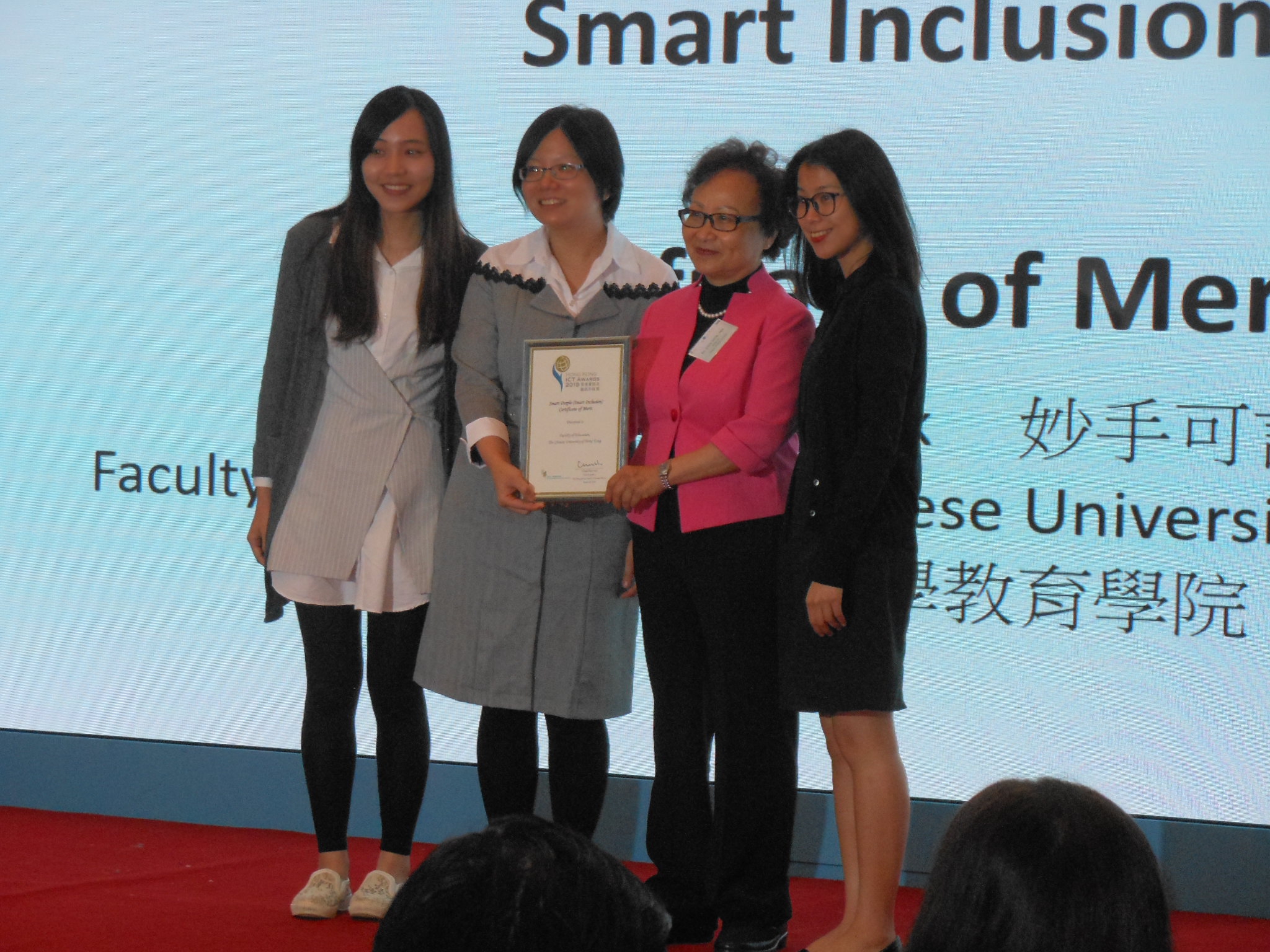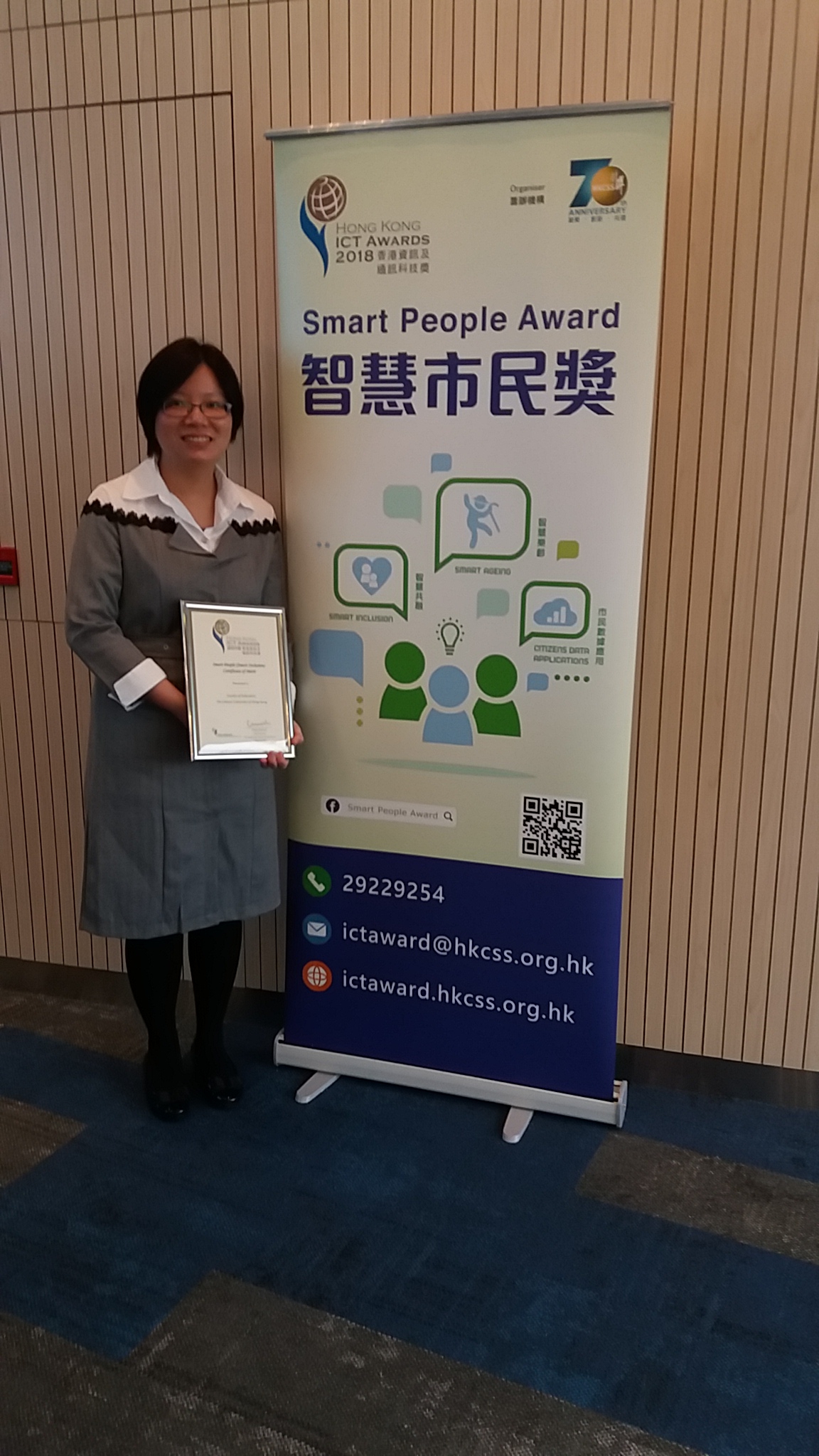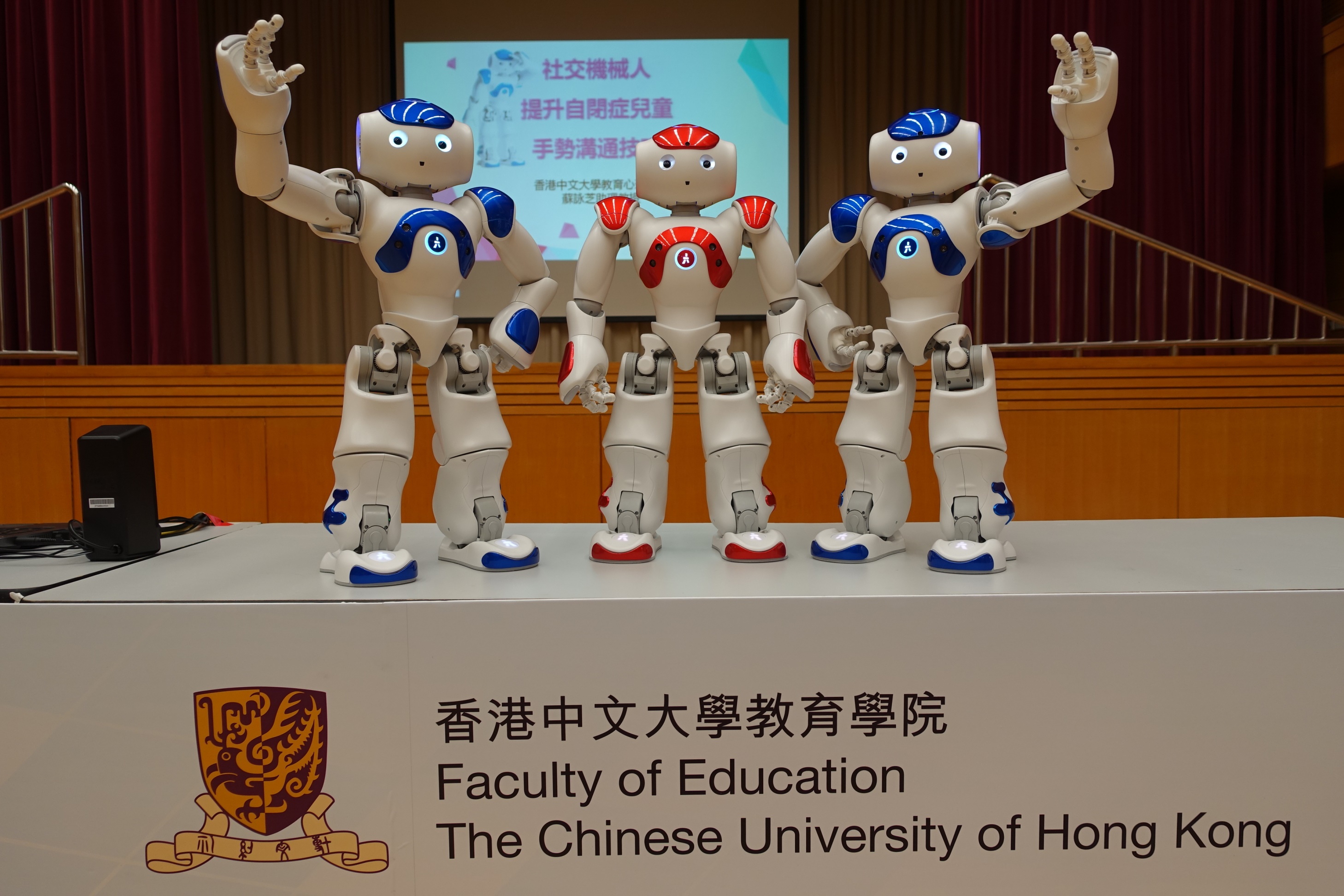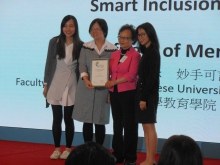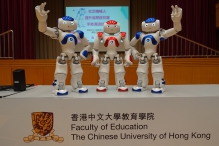CUHK
News Centre
CUHK Robot-based Intervention Programme Receives the Hong Kong ICT Awards: Smart People Merit Award
The robot-based intervention, namely Robot for Autism Behavioral Intervention (RABI), designed and implemented by the Faculty of Education at the Chinese University of Hong Kong (CUHK) received the Smart People Merit Award from the Hong Kong ICT Awards 2018 yesterday (March 29).
The programme was developed by a team led by Prof. So Wing-Chee, Associate Professor of the Department of Educational Psychology, CUHK. The programme aims to promote social communication skills in pre-school and school-aged children with Autism Spectrum Disorders (ASD) and teach them appropriate behaviors in various scenarios through application of social robots. In collaboration with and supported by social service organisations, more than 300 children aged from 4 to 12 with ASD had participated since its establishment in 2014.
Children with ASD are favourable with robotic training
In Hong Kong, there are about 2,000 new child ASD cases each year (according to the 2017 Mental Health Review Report published in March 2017). Children with ASD are characterized by impairments in communication and social interaction. Although human therapists play a significant role, they may not serve as ideal and sole teaching agents for children with ASD.
Prof. So remarked, “Children with ASD usually do not interact with humans. It is because human emotions and facial expressions are too complicated for them to understand. In contrast, the RABI use technology as a supplementary and perhaps better means to teach individuals with ASD social competence and communication skills with repetitive motions and speaking. Technology deliberately creates multiple platforms where children with ASD could learn in a safer environment and with a more pleasant manner. Interacting with technology may not induce sensory overstimulation and distractions in individuals with ASD, thereby lessening their level of anxiety. The use of social robots in educating children with autism represents radical innovations in the application of technology in medicine and education.”
At the early stage of the programme, Prof. So’s team used robot animation to enhance the gestural communication skills of ASD children. They introduced humanoid robots, NAO, in 2016. Several functions like scenarios simulation and communication practice were added to the programme. Since then, the team has launched six different intervention programs and helped ASD children to promote their nonverbal communication skills. In coming years, the team will also deploy new robots, PaPeRo. In the newly developed program, both NAO and PaPeRo robots will perform dramas that aim to explain to preschool children with ASD why they should produce certain appropriate behaviors and how they should behave at homes and in schools. This new programme is funded by the Innovation and Technology Fund for Better Living (FBL), which is administered by the Innovation and Technology Bureau.
About Hong Kong ICT Awards
Steered by the Office of the Government Chief Information Officer, the Hong Kong ICT Awards were established in 2006. It aims at recognising and promoting outstanding information and communications technology inventions and application. The Smart People Award that Prof. So’s team received was newly introduced this year to promote smart inclusion, smart ageing and citizens’ data applications in Hong Kong.
About The Chinese University of Hong Kong
Founded in 1963, CUHK is a leading comprehensive research university with a global reputation. Located in the heart of Asia, CUHK has a vision and a mission to combine tradition with modernity, and to bring together China and the West. Under the University’s unique collegial system, the programmes and activities offered by its nine colleges complement the formal curricula by delivering whole-person education and pastoral care. The University has eight faculties: Arts, Business Administration, Education, Engineering, Law, Medicine, Science, and Social Science. Together with the Graduate School, the University offers over 300 undergraduate and postgraduate programmes. All faculties are actively engaged in research in a wide range of disciplines, with an array of research institutes and research centres specialising in interdisciplinary research of the highest quality.
CUHK is recognised as the most innovative university in Hong Kong and ranks 27th in the Asia-Pacific region by the latest ‘Reuters: Asia Pacific’s Most Innovative Universities’ listing. The University currently has more than 800 granted patents in different jurisdictions worldwide. A majority of these patents have been licensed to relevant industries that help bring these innovations to the market to benefit society. In academic year 2016-17, CUHK has received 88 granted patents and filed 183 patent applications for inventions developed in the areas of medical technology, biotechnology, information technology, telecommunications, and materials science.
Prof. So Wing-Chee's team introduced humanoid robots in 2016 to enhance the gestural communication skills of ASD children.


